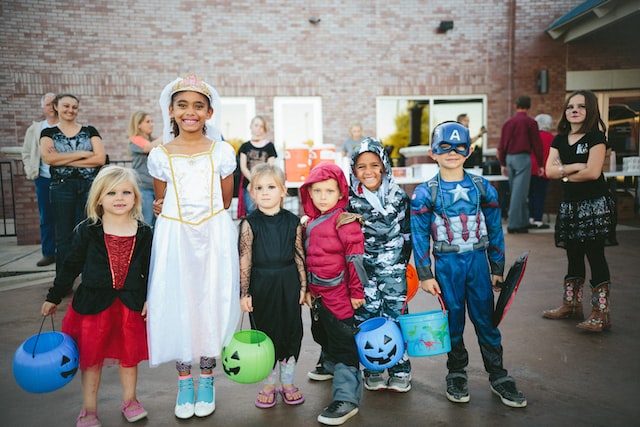Halloween can be a fun time spent with family, friends, and neighbors. When you have a child with special needs, it is possible to have a fun Halloween, but it often takes some extra planning and preparation. Children who have sensory processing issues, are on the Autism spectrum, or have other special needs can enjoy Halloween with some easy modifications. Here are some of our best tips to help everyone join in the fun!
Before Halloween
- Parents, take a moment and lower your expectations. I know most of us fantasize about our child wearing a Pinterest-worthy costume, posing for perfect pictures, and cutely saying: “Trick or Treat” at every house. Sometimes the typical outcome isn’t quite this perfect.
- Find a Halloween-themed age-appropriate book or social story to share with your child. In particular, go over the book to help your child understand the sequence of events. Go over your family rules for Halloween several times, in advance. Give them to your children in writing if that would be helpful (ex: we stay together in our neighborhood, we knock once, after getting a piece of candy we say “thank you”, etc.)
- With the help of a kind neighbor, rehearse the steps for trick-or-treating.
Costumes
- Let your child choose his/her costume, within your stated limits. To avoid a meltdown in the store, let your child know the limits in advance.
- Avoid masks, hats, and other types of headgear. These things may look cute, but children with special needs often have a hard time tolerating them. Some masks pose safety issues anyway.
- If your child has any kind of sensory issues, you must test the fabric for comfort. Cut out any bothersome tags. The costume should not feel restrictive to your child.
- Allow your child to wear the costume around the house several times before Halloween. You can observe to see if anything about the costume is bothering your child and make adjustments.
On Halloween
- If your child is familiar with a daily schedule, give him a special visual or written schedule for Halloween day. Be sure to add in any special school parties or events that will occur that day. Often, this helps a child with special needs feel more secure and in control.
- Consider starting to trick-or-treat before it gets dark.
- Feed your child a healthy dinner before trick-or-treating. A hungry child is more likely to melt down and will be tempted to eat candy before you can inspect it.
- Stay in familiar areas and don’t go too far from home. If your child melts down, you will want to be close to home.
- Avoid houses with flashing lights and loud, scary sounds – these often trigger meltdowns.
- Watch your child for the beginning signs of a meltdown, fearfulness, or discomfort. Be ready to end the evening early if necessary.
- If you have other children, consider having another adult at your house to help out if you need to bring your child with special needs home early.
- After trick-or-treating, promptly transition back to your child’s normal bedtime routine. This will help your child feel safe and secure.
Keep the goal in mind – that your family has a fun time together on Halloween and that you all have great memories of the holiday. From all of us at All About Therapy in Raleigh, we wish you and your family a fun and safe Halloween!

